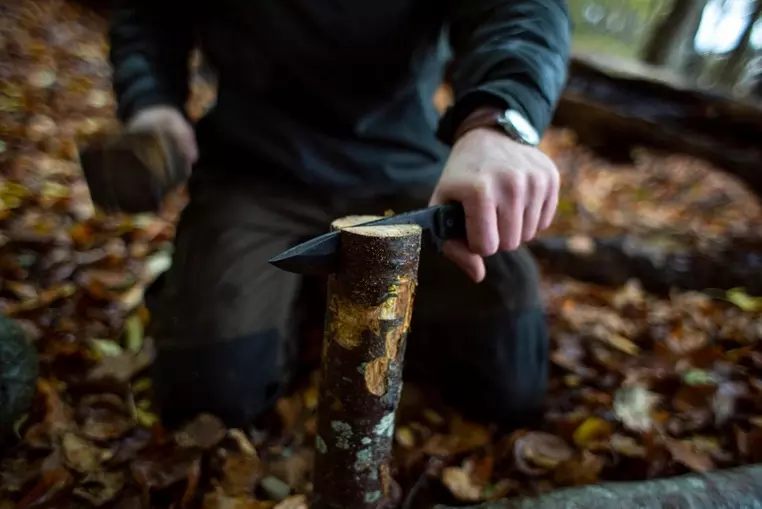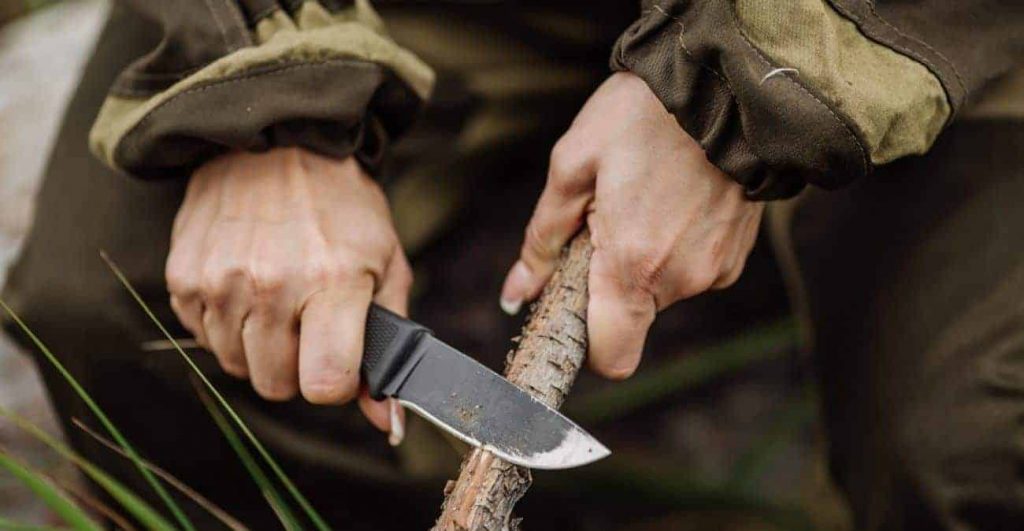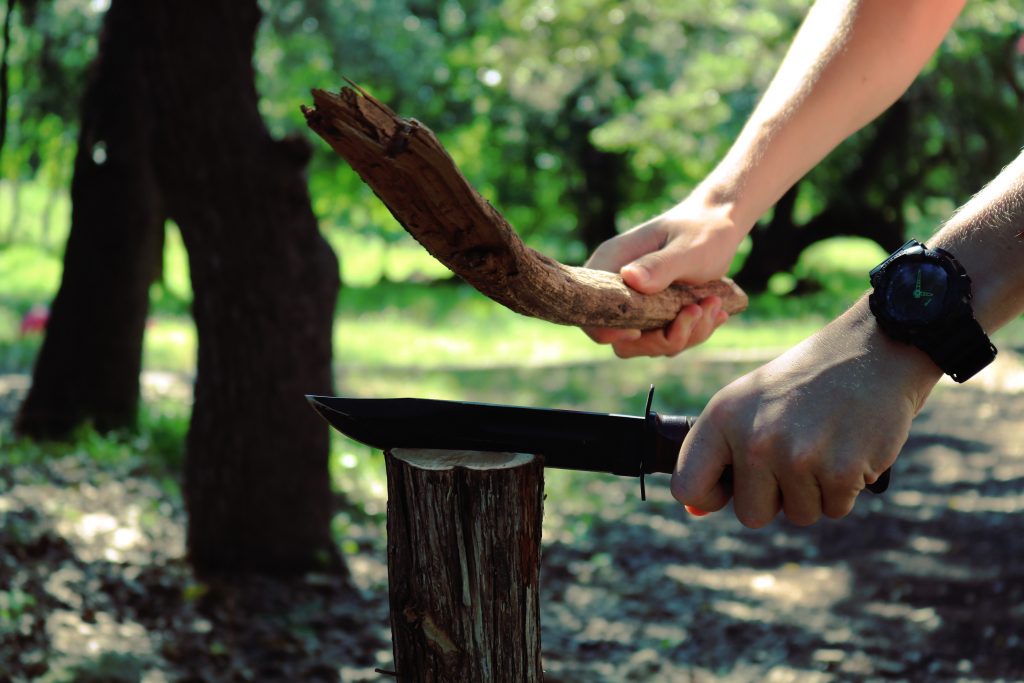If you hear the term batoning with a knife constantly but are unsure what it means exactly, no worries. In this article, you will be able to read everything you possibly need to know regarding what is batoning with a knife and the main reason behind this widely-used bushcraft technique.
So, without further ado, let’s jump straight into the article.

What Is Batoning With a Knife?
Batoning is a technique that has helped many people during survival and extreme situations. With the limitations that the wild and the off-grid places offer, you have no choice but to use what you have to make one thing from another. As this technique is pretty simple, all you need is a sturdy knife (preferably a larger one, not a pocket knife) and a piece of wood.
In continuation, you can read the definition of batoning, how it works, and much more, so ensure to read this article until the very end.
Related: How to Use a Gimlet
The definition of what is batoning with a knife, and what is its purpose?
The simplest definition of what is batoning with a knife is that it is splitting a piece of wood with the help of a knife and another piece of wood. The purpose of this technique is to get small pieces of wood for projects, light a fire, create kindling, split bigger logs, create access to the inner dryer part of a log, produce boards, slats, shingles, etc.
How to baton with a knife
To learn and master this amazing bushcraft technique, you will need some practice before you can call yourself a master in it. Once you get a hold of the technique and the thing you need to pay attention to, I do not doubt you will be unstoppable, and this technique will serve you for many purposes during your stay in the wild.
Read more: What Is a Gimlet Tool?

Decide the purpose of the batoning
The first and foremost thing you will need to do before starting the batoning process is to make the purpose of batoning with the knife clear. This is important because by having this information, you will know how to proceed so that you achieve the wanted result quickly and more efficiently.
For instance, if you want to baton the logs to get wood for a fire, you will not have to pay much attention to the details and process itself. But, on the other hand, if you want to use this bushcraft technique to make some wooden crafts or something similar, you will have to be more careful, take more time, and pay much more attention to how you are doing the batoning process.
That being said, after you come up with a plan and visualization of what to do you want to achieve by batoning wood with your knife, you may continue to the next step, which is preparing the tools.
Prepare the tools
After deciding how to use the batoned wood, you can continue preparing the necessary tools for successfully performing the batoning.
The first tool you will need is a sturdy knife with a sturdy handle. There are many knives that serve for this purpose only, so it would be great if you use one of those. If you do not have a batoning knife with you at the moment, you can use any knife as long as it is not a small pocket knife that is fragile and easily breakable.
The second tool you will need to prepare is the wood with which you will baton the knife into the log. The ideal type of wood to use for a baton is hardwood, as it will least impact the knife, resulting in lower chances of breaking the knife or causing more damage altogether.
Finally, the last thing you will need to take care of is the log you will work on. Depending on your purpose for the batoning, find a decent-sized log that will meet your criteria and requirements for the final result you plan on doing.
Find the right surface
After you have gathered the necessary tools and planned what you would do with the log, the next and extremely important thing is to find the right surface. This means you must search for a flat, sturdy surface with no mud, wetland, or sand. If the surface or ground is not as flat as possible, you might risk harming yourself, so do not start with the batoning until you are sure the ground is right for it.
When you find a surface or a ground that will do a decent job, place the log, the knife, and the piece of wood or hardwood on it, and you can start batoning with your knife.
Read more: What Is a Tarp Made Of?

Start the batoning
Properly position the log
The first thing you are required to do before you start with the actual batoning process is to place your log upwards on sturdy ground. For bigger security and safety, you can fix the log in place with some large stones or place it between two sturdy objects that will not let it move. When you are sure that the log is fixed properly, you can continue preparing the knife.
Carefully handle the knife
As I have mentioned earlier, the type of knife you choose for batoning is extremely important. This means that a weak and low-quality knife might easily break under the pressure of the hardwood, leaving the blade stuck in the log.
To avoid this dangerous situation, you must ensure that your knife is sturdy enough to take the hits from the hardwood.
After you are sure that your knife can manage and withstand the strikes, take it in your dominant hand and do a tight grip.
Make the first strikes
Now, it’s time for the actual batoning. Place the knife on the log so that the blade is on the top and center of the log. Then, keep the knife sturdy and start hitting it with the piece of hardwood until you make the first cut. You can rotate the knife after each strike, depending on the results you want to get.
Continue batoning until the desired result
Finally, after making the first strikes and shaping the direction and size of the pieces of wood you want to get, keep repeating the process until you get down to the bottom of the log.
Read more: How to Sharpen a Hatchet With a Stone
Conclusion
In this article, you could have read what is batoning with a knife and how you can perform this technique. Thanks to the step-by-step instructions, I do not doubt that you will be able to master this bushcraft and extremely useful survival skill in no time.
